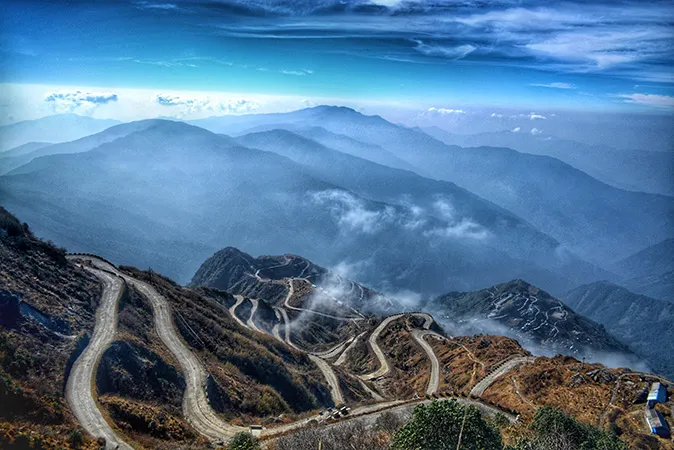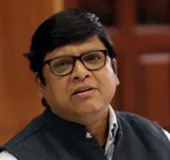 This article is part of the series — Post-Pandemic Development Priorities.
This article is part of the series — Post-Pandemic Development Priorities.
India’s North Eastern Region (NER) has nine percent of India’s geographical area and contributes three percent to the country’s gross domestic product (GDP). However, given its rich natural resource base and strategic location, the NER has the potential to become a “powerhouse” in terms of trade and investment. The NER is unique in terms of the economic opportunities it offers. About 98 per cent of the region’s borders form India’s international boundaries; it shares borders with China, Bangladesh, Bhutan and Myanmar. Given its strategic location, the NER serves as a geographical base for India’s growing economic linkages not only with the Association of Southeast Asian Nations (ASEAN) but also with neighbouring countries in South Asia, namely, Bangladesh, Bhutan, and Nepal.
However, one of the major constraints holding back the development in Northeast India is inadequate infrastructure. The investment potential considerably goes up in the NER when one considers its geographical proximity to Southeast and East Asian markets. The major challenges faced today in order to strengthen the internal connectivity in Northeast India are lack of awareness of the common people about the benefits of greater economic engagement between Northeast India and Southeast Asia. In order to reap this benefit, Northeast India has to improve its ‘backend’ infrastructure, which would not only help the region to raise its competitiveness but also narrow the development gaps. Therefore, the role of infrastructure development in promoting Sustainable Development Goal (SDG) 9 is immensely important.
The major challenges faced today in order to strengthen the internal connectivity in Northeast India are lack of awareness of the common people about the benefits of greater economic engagement between Northeast India and Southeast Asia.
The 2030 Agenda for Sustainable Development, adopted by all United Nations Member States in 2015, provides a shared blueprint for peace and prosperity for people and the planet, now and into the future. At its heart are the 17 Sustainable Development Goals (SDGs), which are an urgent call for action by all countries — developed and developing — in a global partnership. Among its 17 SDGs, SDG-9 aims to build resilient infrastructure, promote inclusive and sustainable industrialisation and foster innovation.
Surrounded by international borders, infrastructure development — both internal and international — could be the best choice for inclusive development in India’s Northeast. International infrastructure, which is also termed as connectivity, may help the NER to become more economically engaged with neighbouring countries. India’s Act East Policy presents an opportunity to unlock the region’s trade potential.
Building resilient infrastructure also requires development of the border in Northeast India and facilitation of border trade. The border is seen as a connector and as an economy-building asset rather than a deterrent. In recent years, India’s trade with Bangladesh and Myanmar witnessed a steep rise in growth, which indirectly suggests the existence of a large trade potential. However, supply-side constraints, among others, inhibit the two-way trade across the borders with India’s two neighbours. Enhancing Northeast India’s existing level of trade and economic linkages between Bangladesh and Myanmar would need infrastructure and institutional support, which would facilitate growth and remove the region’s economic isolation. The Northeastern states of India are likely to gain more from the Trilateral Highway, compared to many other Indian states. Removing the status quo, therefore, means the NER has to invest in building physical and institutional infrastructure, which in return would lead to higher production — both within and across borders — and industrialisation, which will foster innovation and enhance the economic linkages with the neighbouring countries.
The Northeastern states of India are likely to gain more from the Trilateral Highway, compared to many other Indian states.
But, Northeast India is prone to natural calamities. Therefore, we have to develop technology that can deal with the climate, terrain and needs of the region for expediting construction. About 50 percent of the land mass in the Northeast India is covered with forest. Suitable amendments in the relevant legislations may be considered to accommodate developmental needs. At the same time, we need to digitise the land records of the entire Northeast India.
Low private investment is another big challenge to overcome. Providing an enabling environment for private investment would pave the way for engagement with Southeast and East Asia.
The states of Northeast India must complete ongoing rail, road, Inland Water Transport (IWT) and aviation projects on a fast-track basis and also improve border infrastructure with adequate storage facilities, testing labs, etc. In parallel, we must work together to bring synergy in trade procedures with Bangladesh and Myanmar and build express corridors for special goods. Paperless trade and interoperability of single window clearance should be taken up.
India has ratified the TIR convention (Transports Internationaux Routiers), whereas, Bangladesh and Myanmar are yet to sign it. Signing the TIR would facilitate seamless trade and transportation in the region. The North East Council (NEC) may consider setting up a Northeast Trade Portal. Greater involvement of development banks (eg. ADB) and high income countries (eg. Japan) will certainly pave the way for development of connectivity in Northeast India.
Stronger infrastructure linkages across Northeast India will build a stronger network of cross-border production chains, particularly with Southeast Asia and Bangladesh.
The states of Northeast India may also undertake projects on their own to strengthen infrastructure linkages across borders. For example, the NER states may consider signing MoUs between their own state industrial development corporations with their counterparts in Myanmar, Thailand and Japan; opening handlooms and showcasing through exhibitions in Southeast Asian countries; promoting joint ventures in horticulture, floriculture packaging and other allied industries; setting up cultural networks and educational exchange programmes with the Southeast Asian countries and Japan.
Stronger infrastructure linkages across Northeast India will build a stronger network of cross-border production chains, particularly with Southeast Asia and Bangladesh. Inadequate backward links in rail, water and road will continue to hamper economic integration. Institutions are needed to support the infrastructure development programmes. The present institutional linkages are no doubt improving, but these have to be strengthened further to support connectivity projects between India and Southeast Asia. To conclude, to fulfil SDG 9, infrastructure development has a strong catalytic role to play in Northeast India.
Finally, policy responses should then focus on:
i. Strengthening infrastructure linkages,
ii. Facilitating trade, investment and tourism,
iii. Developing human resources, and
iv. Protecting the environment and promoting the sustainable use of shared natural resources in India’s Northeast.
The views expressed above belong to the author(s). ORF research and analyses now available on Telegram! Click here to access our curated content — blogs, longforms and interviews.



 This article is part of the series —
This article is part of the series —  PREV
PREV


